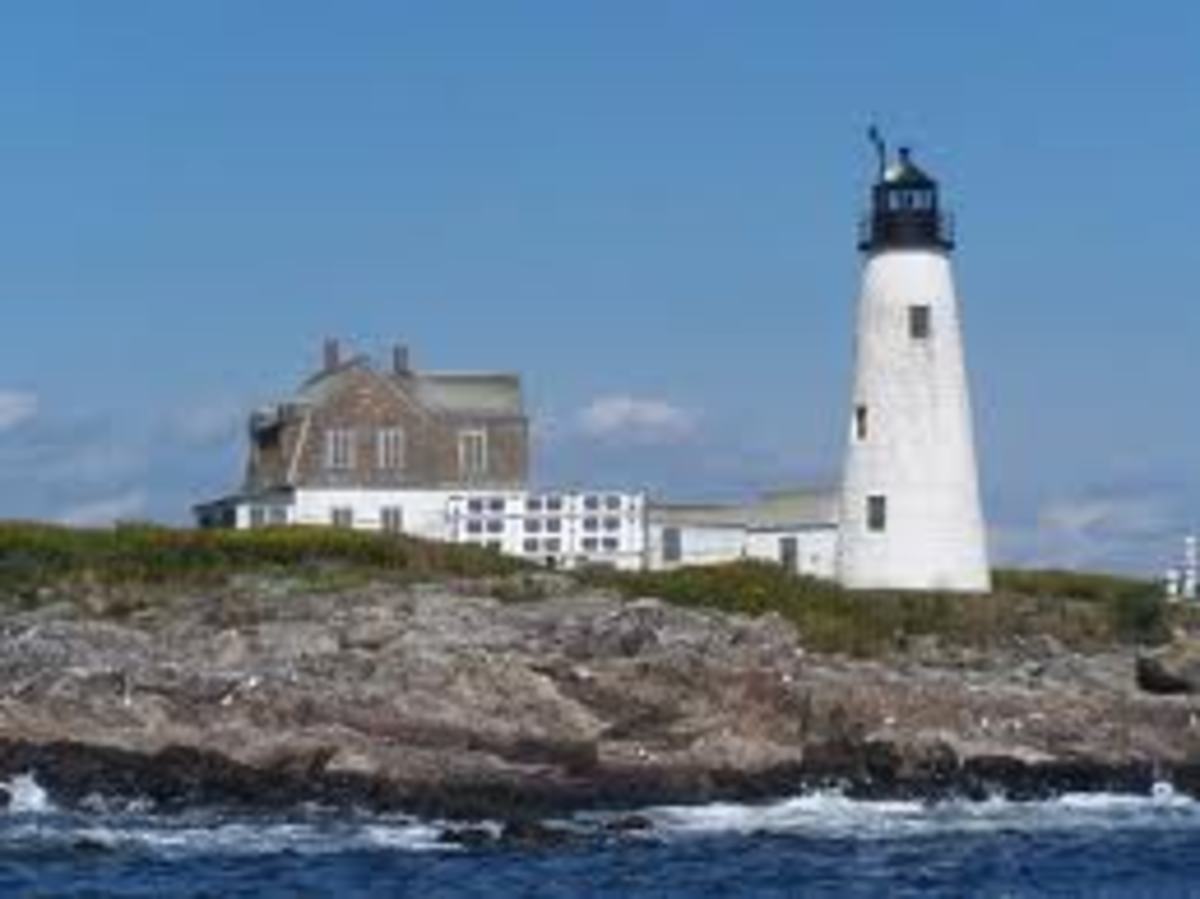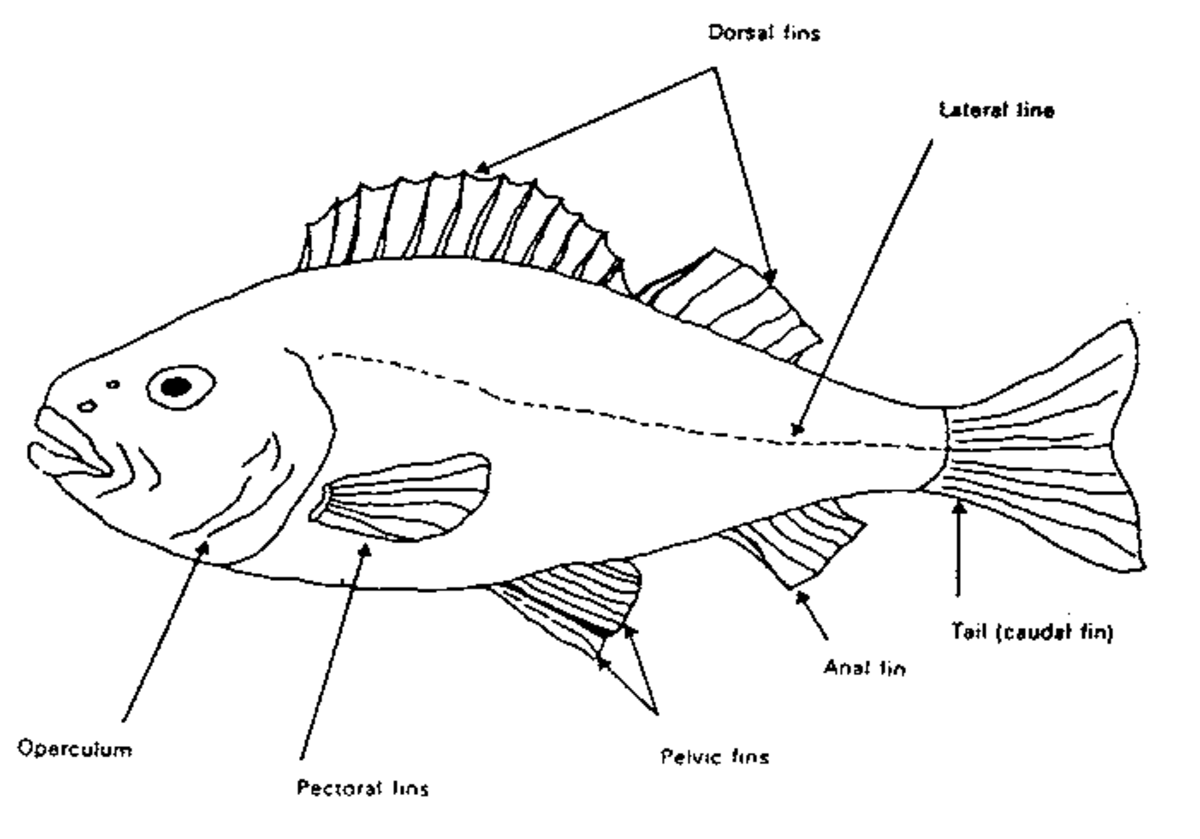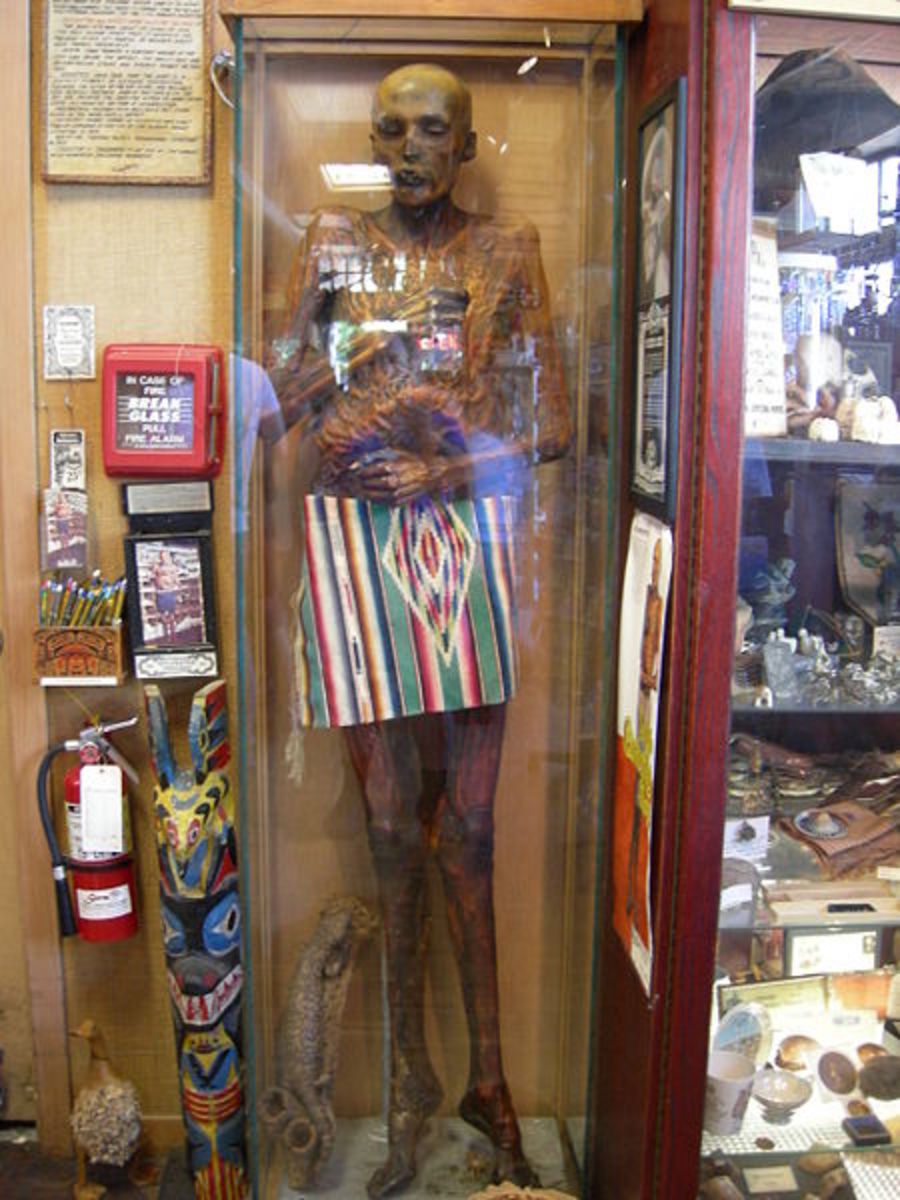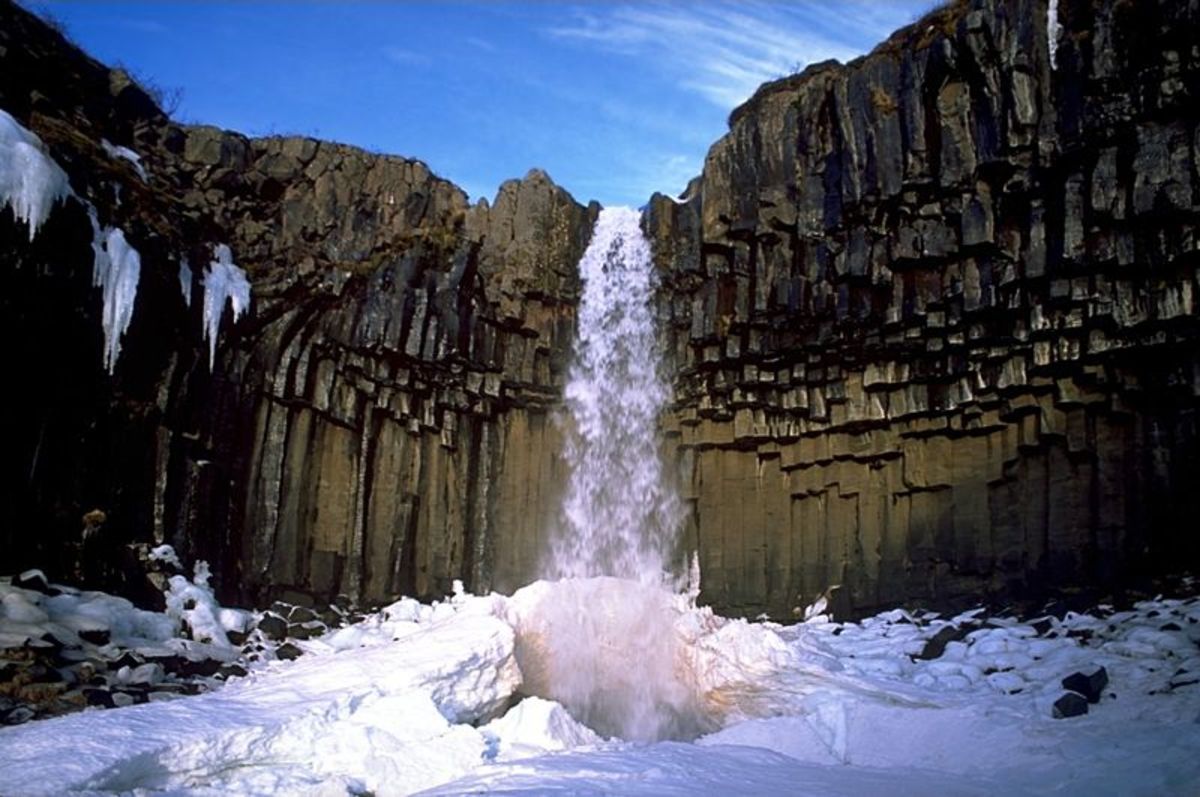The 13 Most Haunted Places in the World: No. 11, The Great Sargasso Sea
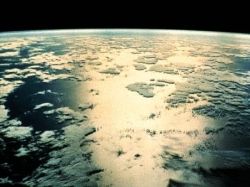
Centuries of Lost Ships and Mad Seafarers
A sea within a sea, without a boundary or a shore; this is the Great Sargasso Sea. Legends abound of seafarers driven mad in a windless forest of choking seaweed. For centuries, lost and abandoned ships have been pulled down in a tangled green death, making the Great Sargasso Sea one of the most haunted places on earth.
Out in the Atlantic Ocean, in the midst of the Bermuda Triangle, is one of the most infamous stretches of water ever charted: The Great Sargasso Sea. The Great Sargasso Sea is a sea within a sea, a sea without a shore. It is also home to a dark, mysterious history of derelict ships, seaworthy but adrift and abandoned, with signs of human life inexplicably cut short. But by what?
This lens of one of a series of 13 lenses I am creating about the most haunted places on earth. You will be amazed by some of the locations! Here, we will focus on hauntings of the seas.
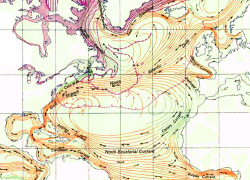
A Legendary History
Legends of a Port of Missing Ships
Legends of a "Port of Missing Ships" were known for centuries before the Bermuda Triangle began to reveal its nefarious secrets. Columbus encountered it on his famous voyage to discovery of the New World; believing he was approaching land, he ordered the area fathomed only to discover it apparently had no bottom. (It has, in fact, but it is miles deep in the Abyssal Plain.)
Depictions of the Sargasso invariably showed a graveyard of abandoned vessels of all kinds, motionless and rotting under blankets of alien-looking sargassum weed, decomposing into a stagnant sea. One of the stories passed down from generations of seafarers is that of the old slave ship found choked with tendrils of sargassum seaweed and listing heavily in the water. When it was boarded, no captain or crew could be found; in the noisome belly of the ship, the skeletons of slaves chained together in their death throes, their bones picked clean.
The weather has also played a role in creating the Great Sargasso Sea's reputation as a ship killer. It was dreaded for centuries because of its deathly calm, a nearly-windless "doldrums" stretching over two million square miles of water that often captured and held ships for weeks at a time. Many times crossing the Atlantic, the Spanish found themselves mired in the matted Sea. Unable to sustain themselves, they were often forced to cast cargo and even horses overboard simply to survive. Because of this, the area is known by seafarers as the "Horse Latitudes" - and they cross directly through the Great Sargasso Sea.
________________________________
Photo Credit: Image is in the public domain. Retrieved from: http://en.wikipedia.org/wiki/File:North_Atlantic_G...
Did You Know?
The Sargasso Sea, located entirely within the Atlantic Ocean, is the only sea without a land boundary.
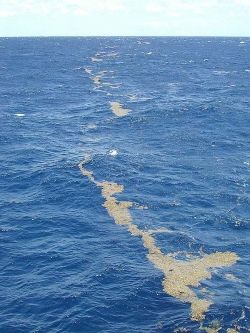
The Devil is in the Details
The Great Sargasso Sea floats upon the Atlantic Ocean between latitude 20° to 35° North and longitude 30° to 70° W. Its currents are barely detectible and yet it is surrounded by several of the most powerful currents in the world's oceans; the Gulf Stream, the North Atlantic Drift, and the Canary, Antilles, and Caribbean currents intermingle to contain the Sargasso, keeping it largely separate from the rest of the Atlantic. The Sargasso has only a slight rotation and although it sometimes changes position, depending upon the influence of the surrounding currents, anything that sails into its vast expanse is likely to meet an end there.
Scientists once propounded a theory that the strong external currents were responsible for carrying the sargassum seaweed from other areas and flushing it into the stagnant area of the Sargasso Sea. But observation of the currents at work and a study of the seaweed have shown that, over the centuries, the sargassum weed has actually adapted to the area, thriving and reproducing into a surreal seaweed forest growing deep into the water and hundreds of miles from any shore.
Even the earliest studies have shown some connection between the Great Sargasso Sea and the area that later became known as the Bermuda Triangle. A seven-year long study of the area undertaken in the late 19th century by the Hydrographic Office of the United States concluded that most derelict vessels recorded in the north Atlantic were first sighted in the area of the Triangle and were later pushed into the Sargasso Sea by its powerful exterior currents. Most ended up as ghosts, drifting in its choking doldrums; others were swept away to founder in the depths of the Atlantic.
___________________________________
Photo Credit: This work is in the public domain in the United States because it is a work prepared by an officer or employee of the United States Government as part of that person's official duties under the terms of Title 17, Chapter 1, Section 105 of the US Code.
Wrecks and Derelicts of the North Atlantic: 1887 - 1893
The study, published in 1894 as Wrecks and Derelicts of the North Atlantic: 1887 - 1893, recorded an astounding 1,628 derelicts, including more than 160 American ships, 134 British, and others from most of the seafaring countries of the world. U.S. Navy Commander S.D. Sigsbee, who authored the study, noted that most derelicts were first located west of 60° longitude and north of 35° latitude. Although a large percentage of the derelicts recorded might be otherwise explained, the circumstances of most defied rational explanation: perfectly seaworthy vessels abandoned, their experienced, seasoned crews vanished without a trace. These findings made the legends - and the centuries of warnings - about the Great Sargasso Sea much more plausible. Read it for yourself in this book.
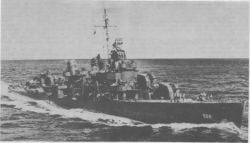
Haunting Mysteries
Sigsbee reported the 1881 sighting by the Ellen Austin of an abandoned schooner drifting on the north side of the Sargasso Sea; a crew was placed on board and the derelict was set to sail into port alongside the Ellen Austin. Two days later the schooner was noted sailing irregularly. She was boarded again but, to the great discomfit of the men of the Ellen Austin, was found to be deserted - there was hardly a sign that anyone had ever been on board.
Another of Sigsbee's reports describes the case of the James B. Chester found derelict and drifting in the currents of the eastern edge of the Sargasso Sea in 1855, its wheelhouse and quarters disheveled and rotting meals found in the ship's mess. Sigbee notes that the vessel was sailed to London, but there was no record of it ever arriving and the common folklore in the Azores, the nearest land mass the James B. Chester would have passed enroute to England, tells of a ship sailing around in the nearby seas as if lost before disappearing again, and this time altogether, into the deadly mire of the Sargasso Sea.
A strange tale related by Sigsbee is that of the Fannie E. Wolston, a derelict that apparently drifted for years, back and forth across the wide swath of the Great Sargasso Sea. According to Sigbee, the Fannie E. Wolston held the record: It was estimated she had floated about for over five years, logging an amazing 7,025 nautical miles, and was still drifting when Sigbee sighted recorded her. Sailors might have scoffed at Commander Sigbee's meticulous approach; they knew the derelicts were cursed, ghost ships with ghostly crews that were to be avoided at all costs. The Fannie E. Wolston was sighted and reported by over thirty ships in her long travels across the Great Sargasso Sea. In all that time, not one ship approached her and none could be enlisted to tow her into port.
These ghostly derelicts are not just a phenomenon of the past in the Great Sargasso Sea. Reports of abandoned and sinking vessels continued to be recorded throughout the 20th century and into modern times; in 1969 one was sighted still cruising under its own power but otherwise completely abandoned. Another, a modern racing vessel, was discovered to contain a log book left by its captain, Donald Crowhurst in which he details, essentially, losing his mind before ultimately, it is assumed, tossing himself into the sea.
____________________________________
Photo Credit: This file is a work of a sailor or employee of the U.S. Navy, taken or made as part of that person's official duties. As a work of the U.S. federal government, the image is in the public domain.
Did you know?
The Great Sargasso Sea is named after the sagassum seaweed that proliferates over its two million square mile face.
Free Floating Sargassum
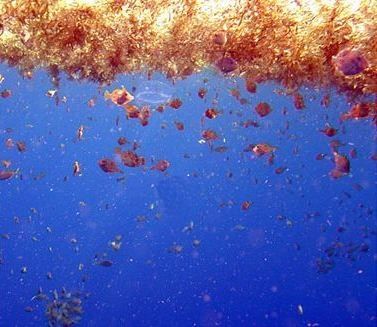
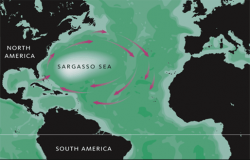
How to Get There
Not recommended, but whatever floats your boat!
Any visit to the Great Sargasso Sea would have to start with a tip to Bermuda. Once there, a private boat charter is probably your best bet - that is, if you can find a vessel willing to risk a propeller-killing forest of seaweed surrounded by vicious drift currents.
Places to Stay
Bermuda offers accommodations for every budget. Visit www.gotobermuda.com or www.bermuda.com to explore your options.
If You Go
I cannot recommend travel to this area. The decision to visit the Great Sargasso Sea is entirely up to you!
_________________________________
Photo Credit: This image or recording is the work of a U.S. Fish and Wildlife Service employee, taken or made during the course of an employee's official duties. As a work of the U.S. federal government, the image is in the public domain.
Learn More About Ghosts of the Sea and Strange Happenings in the Bermuda Triangle


Check Out My Books on Amazon.com!
Links to More Information
- Sargasso Sea
The Sargasso Sea in the North Atlantic is bounded by the Gulf Stream on the west, the North Atlantic Current on the north, the Canary Current on the east, a - Sargasso Sea Alliance
Sargasso Sea Alliance: A partnership led by the Government of Bermuda to protect the Sargasso Sea. - The Straight Dope: What's the story on the Sargasso Sea?
The Straight Dope - Fighting Ignorance Since 1973: What's the true story with the Sargasso Sea? Is there actually a huge mass of floating seaweed in the middle of the Atlantic? Do ships have a difficult time traversing it? Are there abandoned ships







